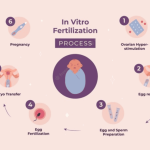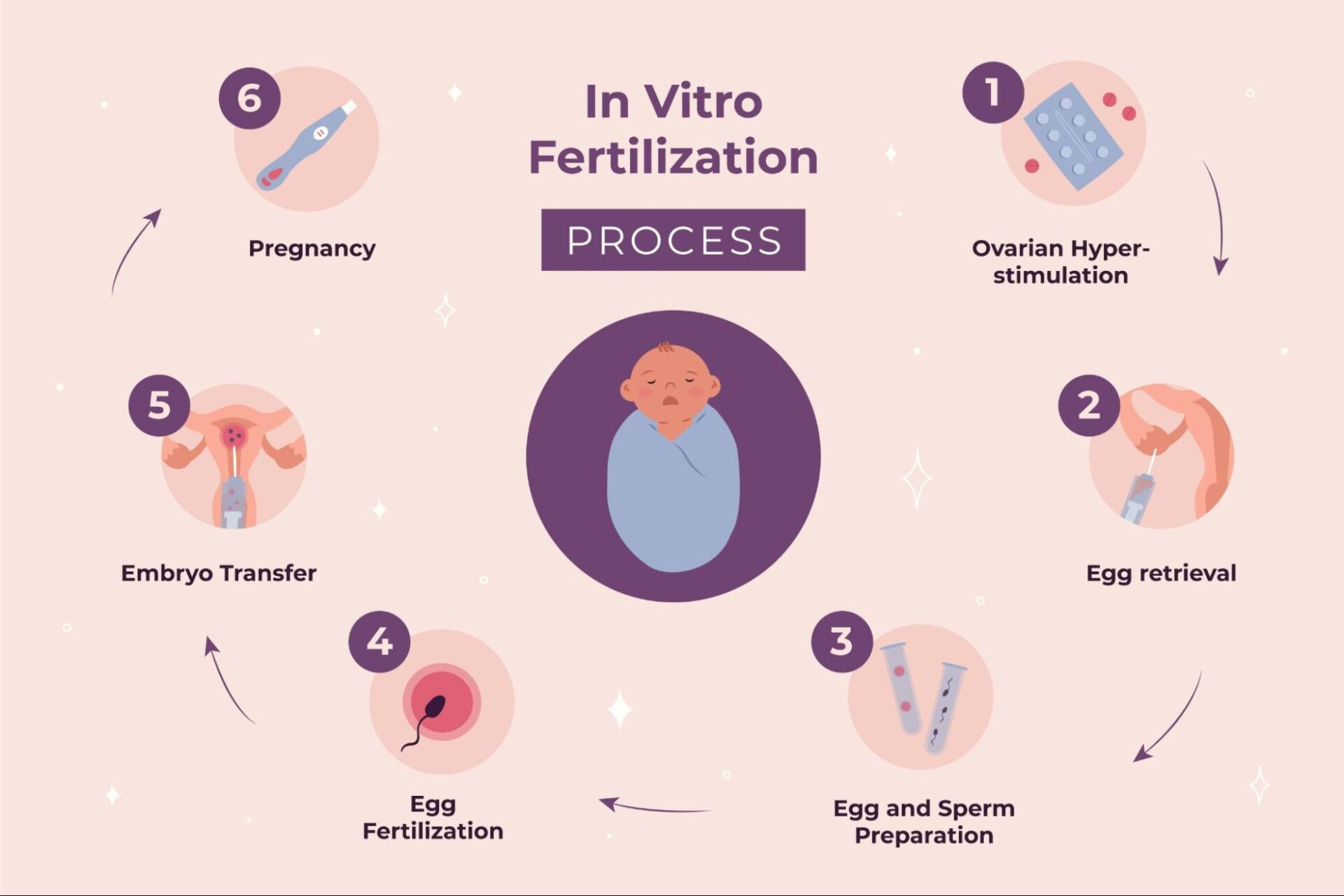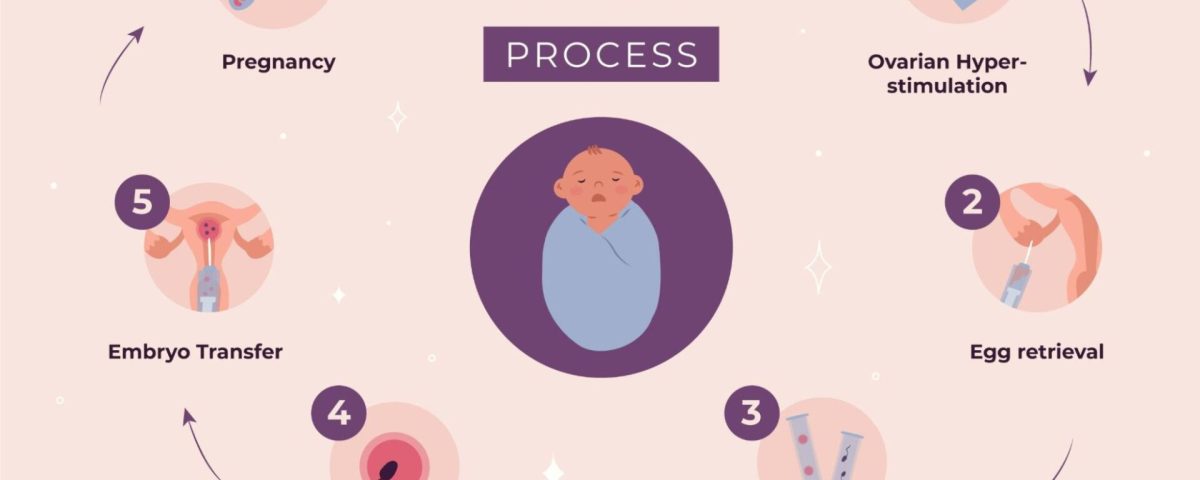
IVF Vote: Everything You Need to Know About the Debate Shaping Fertility’s Future
April 16, 2025
IVF: What Is It? A Deep Dive into the World of In Vitro Fertilization
April 16, 2025The Success Rate of IVF: What You Need to Know to Start Your Journey
In vitro fertilization (IVF) is a term you’ve probably heard thrown around on TV shows, in magazines, or maybe even from a friend who’s been through it. It’s a fertility treatment that’s helped millions of people become parents when natural conception just wasn’t working. But here’s the big question everyone wants answered: What’s the success rate of IVF? Does it really work as well as people hope? And what’s the real story behind those numbers?
If you’re curious about IVF—whether you’re thinking about trying it yourself or just want to know more—this article is for you. We’re diving deep into the success rates, the factors that make a difference, and some surprising details you won’t find in a quick Google search. From secret struggles couples face to the latest science breakthroughs, we’ve got it all covered. Plus, we’ll give you practical tips to boost your chances and answer those burning questions fans of fertility topics are dying to know. Let’s get started!

What Is IVF and Why Does Success Matter?
IVF stands for in vitro fertilization, which is a fancy way of saying “fertilization in a lab.” Here’s how it works in simple terms: doctors take eggs from a woman’s ovaries, mix them with sperm in a petri dish, and then place the resulting embryo back into the uterus to (hopefully) grow into a baby. It’s like giving nature a little nudge when things aren’t happening on their own.
But why are we so obsessed with success rates? Because IVF isn’t cheap or easy. It can cost $15,000 or more per try, and it’s an emotional rollercoaster—think needles, waiting, and lots of crossed fingers. Knowing your odds helps you decide if it’s worth it. Plus, success isn’t just about getting pregnant; it’s about bringing home a healthy baby. So, let’s break down what “success” really means and what the numbers say.
Defining “Success” in IVF
Success in IVF isn’t one-size-fits-all. Clinics might talk about:
- Pregnancy rate: When a pregnancy test shows positive.
- Live birth rate: When a baby is born healthy (this is the big one most people care about).
- Clinical pregnancy rate: When a heartbeat is detected on an ultrasound.
For this article, we’ll focus on live birth rate because that’s the dream, right? A little one to cuddle at the end of it all.
The Emotional Side Fans Don’t See
Here’s something you won’t find in most stats: IVF is a private battle. Couples often hide how tough it is—crying in the car after a failed cycle, or avoiding baby showers because it hurts too much. One woman I heard about kept a secret journal, doodling baby names while waiting for results, only to rip out the pages when it didn’t work. It’s these quiet moments that make success rates feel so personal.
The Big Picture: What Are the Success Rates of IVF?
So, what are your chances? The numbers depend on a lot—like your age, health, and even the clinic you pick. Let’s look at the latest data to give you a clear snapshot.
Success Rates by Age
Age is the biggest factor in IVF success. Why? Because egg quality drops as we get older. Here’s what the numbers look like based on 2021 data from the CDC (Centers for Disease Control and Prevention):
| Age Group | Live Birth Rate per Cycle |
|---|---|
| Under 35 | 41-55% |
| 35-37 | 25-33% |
| 38-40 | 17-22% |
| 41-42 | 10-13% |
| 43-44 | 4-6% |
| Over 44 | 1-4% |
- Under 35: This is the golden zone—your eggs are fresh, and your body’s ready to roll. Over half of cycles can lead to a baby.
- Over 40: It gets tougher. By 44, it’s more like a long shot, with only a few making it to the finish line.
Fresh vs. Frozen Embryos
Here’s a fun twist: embryos can be “fresh” (used right away) or “frozen” (saved for later). Frozen embryos are trending because they often do better. Why? Freezing lets doctors pick the perfect moment to transfer them, and new tech makes them just as strong as fresh ones. Studies show frozen embryo transfers can bump success rates up by 5-10% compared to fresh ones for women under 38.
A Little-Known Fact Fans Love
Did you know some clinics freeze embryos just to give couples a break? One couple I read about used the time between cycles to binge-watch sci-fi movies and eat ice cream—something they couldn’t do with all the stress of a fresh cycle. It’s these quirky details that show IVF isn’t just science—it’s a human story.

What Makes IVF Work (or Not)?
Success isn’t random. There are key players that decide if IVF will be a win for you. Let’s unpack them.
Age: The Clock Keeps Ticking
We’ve said it before, but it’s huge: younger eggs mean better odds. After 35, egg quality dips fast, and by 40, it’s a steep climb. Dr. Emily Carter, a fertility expert, once told me, “Age is the one thing we can’t outsmart yet—it’s biology’s tough rule.”
Practical Tip:
✔️ If you’re under 35, don’t wait too long—your chances are highest now.
❌ Don’t assume IVF can “fix” age—it works with what you’ve got.
Lifestyle Secrets You Didn’t Know
Your habits matter more than you think. Smoking, stress, and even too much coffee can mess with your odds. One study found women who smoked had a 20% lower success rate. And get this: couples who meditate or do yoga together sometimes report feeling more hopeful, even if the science isn’t 100% sure it helps.
Action Steps:
- Quit smoking: It’s a game-changer for egg and sperm health.
- Cut caffeine: Stick to one cup a day.
- Try a hobby: Paint, hike, or even knit—something to chill you out.
Clinic Quality: Not All Are Equal
Not every clinic is a rockstar. Some have fancy tech (like time-lapse imaging to watch embryos grow), while others stick to basics. The best ones have live birth rates 10-15% above the national average. A hidden gem? Smaller clinics sometimes give you more one-on-one time, which fans say feels like a warm hug during a cold process.
How to Pick a Clinic:
✔️ Check their live birth rates on the CDC or SART website.
✔️ Ask about their lab—good equipment matters.
❌ Don’t just go for the cheapest option; quality costs.
Health Conditions: The Silent Saboteurs
Things like endometriosis, PCOS (polycystic ovary syndrome), or low sperm count can throw a wrench in the works. For example, women with endometriosis might see success rates drop by 5-10% compared to others. But here’s hope: treatments like surgery or meds can sometimes level the playing field.
Real-Life Example:
One couple dealt with PCOS by tweaking their diet—less sugar, more veggies—and saw their embryo quality improve. It’s not a cure, but it’s a boost.
Boosting Your IVF Success: Tips You Can Use
Want to tilt the odds in your favor? Here’s how to stack the deck without needing a PhD in fertility.
Pre-IVF Prep: Get Your Body Ready
Think of your body like a garden—you’ve got to prep the soil before planting seeds. Start 3-6 months ahead:
- Eat smart: Load up on fruits, veggies, and lean protein. One study showed women eating more folate (found in spinach) had better embryo quality.
- Exercise lightly: A brisk walk beats a marathon—overdoing it can stress your hormones.
- Sleep: Aim for 7-8 hours. Tired bodies don’t play nice with embryos.
During IVF: What to Do (and Avoid)
Once you’re in the thick of it, small choices add up:
✔️ Follow your doctor’s med schedule—timing is everything.
✔️ Stay hydrated—your ovaries will thank you.
❌ Skip alcohol—it’s a no-go for egg and sperm health.
❌ Don’t Google every symptom; it’ll drive you nuts.
The Mental Game: Keeping Your Cool
IVF is a mind game as much as a body one. One woman I know made a “hope jar”—every day, she dropped in a note with something she was grateful for. It didn’t change the science, but it kept her sane.
Stress-Busting Ideas:
- Watch a funny movie—laughter lowers stress hormones.
- Talk to a friend who gets it—not everyone will.
- Try a 5-minute breathing trick: inhale for 4, hold for 4, exhale for 4.
The Latest IVF Breakthroughs You Haven’t Heard About
Science is moving fast, and some new tricks are shaking up success rates. Here’s what’s hot in 2025.
AI Picks the Best Embryos
Artificial intelligence (AI) is now helping doctors spot the strongest embryos. It’s like having a super-smart assistant who can predict which ones will thrive. Early studies show AI boosts success rates by up to 15% in some cases.
Mitochondrial Magic
Mitochondria are the “powerhouses” in your cells, and they matter for eggs. A new technique called mitochondrial replacement therapy is being tested to juice up older eggs. It’s still experimental, but it could be a game-changer for women over 40.
IVG: The Future of Fertility?
In vitro gametogenesis (IVG) is wild—it’s about making eggs or sperm from skin cells. It’s only worked in mice so far, but imagine the possibilities: no more donor eggs, just your own cells turned into a baby-making machine. Experts say it’s 5-10 years away for humans, but it’s got fans buzzing.
Expert Insight:
Dr. Sarah Lin, a reproductive scientist, says, “IVG could rewrite the rules of fertility. It’s not here yet, but it’s the kind of leap that keeps us hopeful.”
Real Stories: What Success Looks Like
Numbers are great, but stories hit home. Here are two IVF journeys to show you the highs and lows.
Jenna’s Win After Three Tries
Jenna, 32, had PCOS and a low egg count. Her first two cycles failed, and she almost gave up. On her third try, she used a frozen embryo and added acupuncture (a tip from her nurse). Nine months later, she had twins. Her secret? “I stopped obsessing over every detail and just let it happen.”
Mike and Tara’s Long Road
Mike, 40, and Tara, 38, faced male infertility. After four cycles and $60,000, they switched clinics and used donor sperm. Their daughter arrived last year. Tara’s takeaway: “It’s okay to pivot—success doesn’t always look like you planned.”
FAQs: Your Burning Questions Answered
Fans love a good Q&A, so here are the top questions people ask about IVF success rates.
Does IVF Work the First Time?
Sometimes! For women under 35, about 40-50% get a live birth on the first try. But it’s not a guarantee—think of it like rolling dice with better odds if you’re younger.
How Many Cycles Should I Try?
Most experts say 3-6 cycles give you a solid shot, depending on your situation. After three, success rates drop a bit, but some still win on round five or six.
Can I Improve My Odds Naturally?
Yes, a little! Healthy eating, less stress, and quitting bad habits help. But age and biology still call most of the shots.
The Hidden Struggles Fans Want to Know
IVF isn’t all lab coats and happy endings. Here’s the stuff couples whisper about but rarely share.
The Money Crunch
One cycle can drain your savings—think $15,000-$20,000. Some sell cars or take loans. A lesser-known hack? Look for clinics with “shared risk” programs—if it doesn’t work, you get some money back.
The Partner Pressure
Guys don’t talk about it much, but sperm issues can hit hard. One dad-to-be said he felt “less than” until they used a donor and focused on the baby, not the biology.
The Waiting Game
After the embryo transfer, you wait 10-14 days for a pregnancy test. Couples call it the “two-week torture.” Some binge Netflix; others check forums nonstop. Either way, it’s brutal.
Your Next Steps: Making IVF Work for You
Ready to dive in? Here’s a roadmap to get started.
Step 1: Research Your Options
- Find a clinic with high success rates for your age group.
- Ask about frozen embryos and extra tech like AI or genetic testing.
Step 2: Talk to Your Doctor
- Get a full checkup—hormones, uterus, sperm, everything.
- Be honest about your lifestyle; they can tweak your plan.
Step 3: Build Your Support Squad
- Pick a friend or therapist to lean on.
- Join an online group—Reddit’s r/infertility is a fan favorite.
Let’s Talk: Join the Conversation
IVF success is a journey, and we’d love to hear from you! What’s your biggest question about IVF? Have you tried it, or are you just curious? Drop a comment below, share your story, or ask away. Let’s keep this community growing—because no one should feel alone on this ride.
